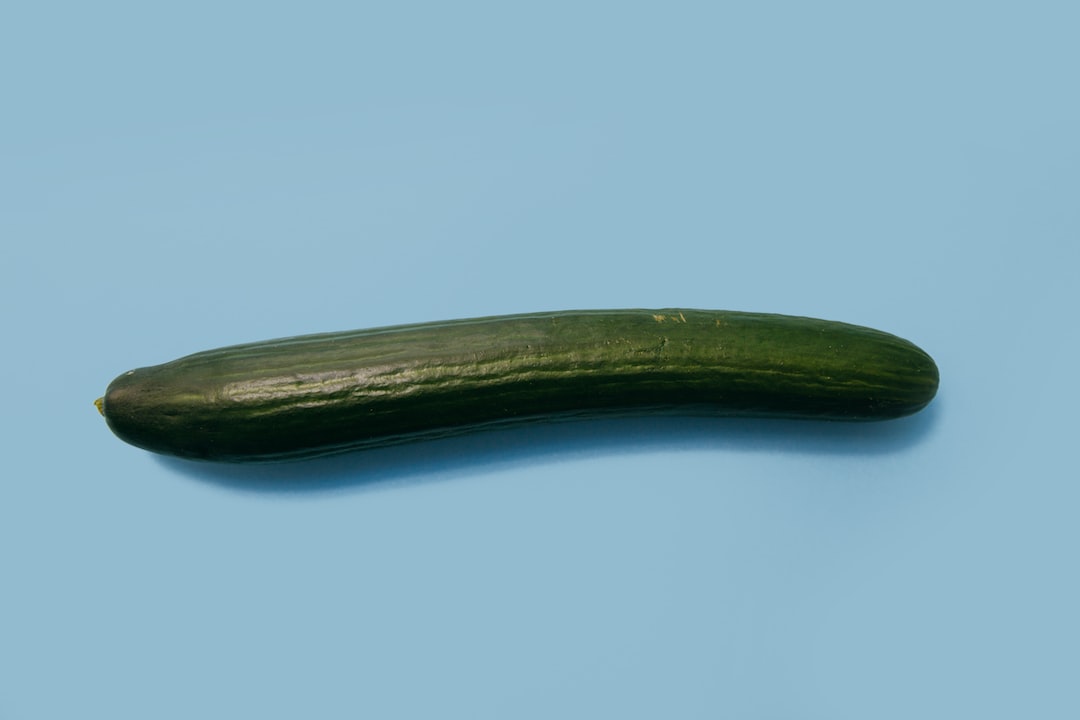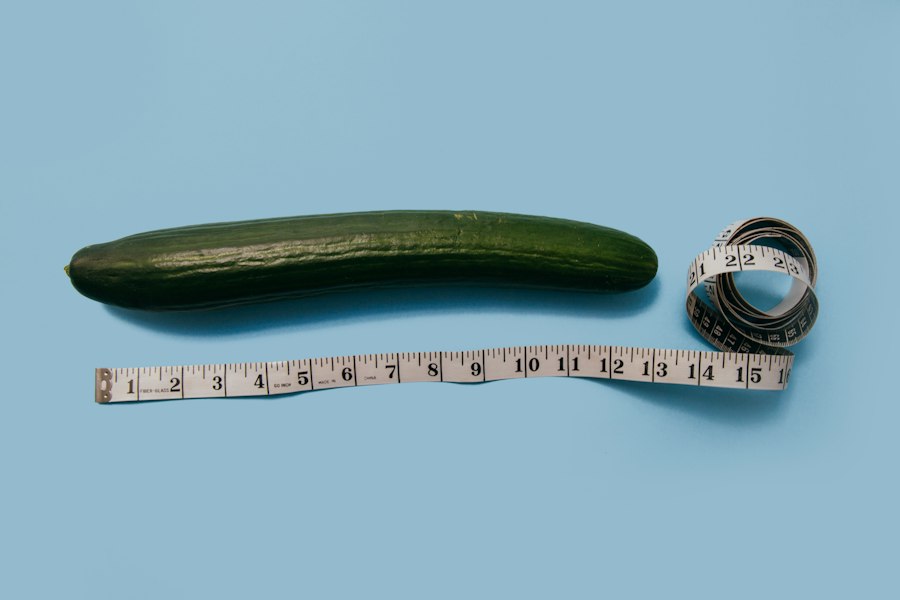Ready to Pick: How to Tell When Your Cucumbers are Ripe

Understanding the growth and ripeness of cucumbers is essential for anyone who wants to enjoy the best-tasting and most nutritious cucumbers possible. Cucumbers are a popular vegetable that can be enjoyed in salads, sandwiches, and even as a refreshing snack on their own. However, picking cucumbers at the right time is crucial to ensure optimal flavor and texture. In this article, we will explore the different stages of cucumber growth, the visual signs of ripe cucumbers, and other indicators such as touch, smell, color, and sound that can help determine cucumber ripeness. By understanding these factors, you can ensure that you are picking perfectly ripe cucumbers every time.
Key Takeaways
- Understanding the growth cycle of cucumbers is crucial for picking them at the right time
- Timing is key when it comes to picking cucumbers, as they can quickly become overripe
- Visual signs of ripe cucumbers include a dark green color and a plump, firm shape
- Texture is another important indicator of ripeness, with ripe cucumbers feeling slightly soft but not mushy
- Smelling cucumbers can also help determine ripeness, with a sweet, fresh scent indicating maturity
Understanding the Growth Cycle of Cucumbers
Cucumbers go through several stages of growth before they are ready to be harvested. Understanding these stages can help you determine when the cucumbers are at their peak ripeness. The first stage is the germination stage, where the seed sprouts and develops into a seedling. This stage typically lasts for about 7-10 days.
After the seedling stage, the cucumber plant enters the vegetative growth stage. During this stage, the plant grows leaves and stems rapidly. This is an important stage for the plant’s overall development and can last for several weeks.
The next stage is the flowering stage, where the cucumber plant produces flowers. These flowers are essential for pollination and fruit development. Once pollinated, the flowers will start to develop into small cucumbers.
The final stage is the fruiting stage, where the small cucumbers grow and mature into full-sized fruits. This stage can take anywhere from 50 to 70 days depending on the variety of cucumber.
Factors such as temperature, sunlight, water, and nutrients can all affect cucumber growth. Cucumbers thrive in warm temperatures between 70-90°F (21-32°C) and require at least 6-8 hours of sunlight per day. Adequate water and nutrient supply are also crucial for healthy cucumber growth. It is important to provide consistent watering, ensuring that the soil is moist but not waterlogged.
The Importance of Timing in Picking Cucumbers
Picking cucumbers at the right time is crucial to ensure optimal flavor, texture, and nutritional value. Picking cucumbers too early or too late can have consequences on the taste and quality of the fruit.
If cucumbers are picked too early, they may be underdeveloped and lack flavor. They may also have a bitter taste due to the presence of cucurbitacin, a compound that can make cucumbers unpalatable. Additionally, underripe cucumbers tend to have a tougher texture and may not be as juicy as fully ripe ones.
On the other hand, if cucumbers are left on the vine for too long, they can become overripe and develop a yellow color. Overripe cucumbers tend to be mushy, have a bland taste, and may even have a bitter aftertaste. They are also more prone to developing seeds and can be less enjoyable to eat.
Visual Signs of Ripe Cucumbers
| Visual Signs of Ripe Cucumbers | Description |
|---|---|
| Color | Dark green with a slight yellowish hue |
| Size | 6-8 inches in length and 2 inches in diameter |
| Texture | Firm and smooth with no soft spots or wrinkles |
| Stem | Fresh and green with no signs of wilting or drying |
| Spines | Small and tender with no signs of yellowing or browning |
One of the easiest ways to determine cucumber ripeness is by looking at their physical appearance. Ripe cucumbers typically have a vibrant green color that is uniform throughout the fruit. The skin should be smooth and free from any blemishes or discoloration.
Another visual sign of ripe cucumbers is their size. Depending on the variety, fully ripe cucumbers can range in size from 6-8 inches long. However, it is important to note that some varieties may be smaller or larger when fully ripe.
When examining the stem end of the cucumber, a ripe cucumber will have a slight indentation or a small bump. This is known as the blossom end, and it should be firm and not soft or mushy.
It is also important to note that the presence of spines on the cucumber’s skin does not necessarily indicate ripeness. Some varieties of cucumbers naturally have spines, while others may have been bred to be spineless. The absence or presence of spines does not affect the ripeness of the cucumber.
Touch and Feel: How Texture Indicates Ripeness
The texture of cucumbers can change as they ripen, making touch an important indicator of cucumber ripeness. When cucumbers are still growing, they tend to have a firm texture with a slight crunch. As they ripen, the texture becomes more tender and less crunchy.
To determine if a cucumber is ripe, gently squeeze it with your fingers. A ripe cucumber should have a slight give when pressed but should not be too soft or mushy. If the cucumber feels hard and does not yield to pressure, it is likely underripe. On the other hand, if the cucumber feels very soft or squishy, it may be overripe.
It is important to note that the texture of cucumbers can vary depending on the variety. Some varieties naturally have a crisper texture even when fully ripe, while others may be softer and more tender.
Smelling Cucumbers: A Surprising Indicator of Ripe Produce

Believe it or not, smell can also be an indicator of cucumber ripeness. As cucumbers ripen, they develop a distinct aroma that is fresh and slightly sweet. This aroma becomes more pronounced as the cucumbers reach their peak ripeness.
To determine if a cucumber is ripe, hold it up to your nose and take a sniff. If you detect a pleasant and slightly sweet scent, it is likely ripe. However, if the cucumber has no smell or smells off or unpleasant, it may be underripe or overripe.
It is important to note that the smell of cucumbers can be subtle, so it may take some practice to detect the aroma. Additionally, some varieties of cucumbers may have a stronger scent than others, so it is important to consider the variety when using smell as an indicator of ripeness.
The Role of Color in Determining Cucumber Ripeness
Color can also be a helpful indicator of cucumber ripeness. While most cucumbers are known for their vibrant green color, the shade of green can change as they ripen.
When cucumbers are still growing, they tend to have a lighter green color. As they ripen, the color deepens and becomes darker. A fully ripe cucumber will have a rich, dark green color that is uniform throughout the fruit.
It is important to note that some varieties of cucumbers may naturally have a lighter or darker green color even when fully ripe. Additionally, certain varieties may have a yellow or white color when fully ripe. It is important to consider the specific variety when using color as an indicator of ripeness.
The Sound of Ripeness: How to Listen for Cucumber Maturity
Believe it or not, sound can also be used as an indicator of cucumber ripeness. When cucumbers are still growing and developing, they tend to have a higher-pitched sound when tapped or flicked. As they ripen, the sound becomes lower and duller.
To determine if a cucumber is ripe, gently tap it with your finger or flick it with your thumb. If you hear a high-pitched sound, it is likely underripe. However, if you hear a lower and duller sound, it is likely ripe.
It is important to note that this method may not be as reliable as other indicators such as visual signs or touch. The sound of cucumbers can be subtle, and it may take some practice to distinguish between the different sounds.
Checking for Consistency: How to Ensure Ripe Cucumbers Every Time
To ensure that all the cucumbers you pick are ripe, it is important to check for consistency. This means examining multiple cucumbers from the same plant or batch to ensure that they are all at a similar stage of ripeness.
When checking for consistency, look for cucumbers that have similar visual signs such as color, size, and texture. If one cucumber stands out as being significantly different from the others, it may not be fully ripe.
It is also important to note that cucumbers on the same plant or in the same batch may ripen at different rates. This is normal and can be influenced by factors such as sunlight exposure, temperature, and nutrient availability. By checking for consistency, you can ensure that you are picking the best cucumbers possible.
The Best Time of Day to Pick Cucumbers
The best time of day to pick cucumbers can vary depending on several factors. Generally, it is recommended to pick cucumbers in the morning when the temperatures are cooler. This is because cooler temperatures can help preserve the freshness and crispness of the cucumbers.
Picking cucumbers in the morning also allows you to avoid the heat of the day, which can cause stress to both you and the plants. Additionally, picking cucumbers in the morning ensures that you can enjoy them at their peak freshness throughout the day.
However, if you are unable to pick cucumbers in the morning, it is still possible to pick them later in the day. Just make sure to avoid picking them during the hottest part of the day when temperatures are at their peak.
Tips and Tricks for Picking Perfectly Ripe Cucumbers
To summarize, here are some additional tips and tricks for picking perfectly ripe cucumbers:
1. Pay attention to the visual signs of ripeness, such as color, size, and texture.
2. Use touch to determine cucumber ripeness by gently squeezing the fruit.
3. Use smell to detect the aroma of ripe cucumbers.
4. Consider the sound of cucumbers when tapped or flicked.
5. Check for consistency among cucumbers to ensure they are all at a similar stage of ripeness.
6. Pick cucumbers in the morning when temperatures are cooler for optimal freshness.
7. Avoid picking cucumbers during the hottest part of the day to prevent stress to both you and the plants.
By following these tips and tricks, you can ensure that you are picking the best cucumbers possible and enjoying them at their peak ripeness.
Understanding the growth and ripeness of cucumbers is essential for anyone who wants to enjoy the best-tasting and most nutritious cucumbers possible. By knowing the different stages of cucumber growth, as well as the visual signs, touch, smell, color, and sound indicators of ripeness, you can ensure that you are picking perfectly ripe cucumbers every time.
Picking cucumbers at the right time is crucial to ensure optimal flavor, texture, and nutritional value. Picking them too early or too late can have consequences on the taste and quality of the fruit.
So next time you’re in your garden or at the grocery store, take a moment to examine the cucumbers closely. Use your senses of sight, touch, smell, and even sound to determine their ripeness. By doing so, you can enjoy the best-tasting cucumbers that are bursting with flavor and nutrients.



